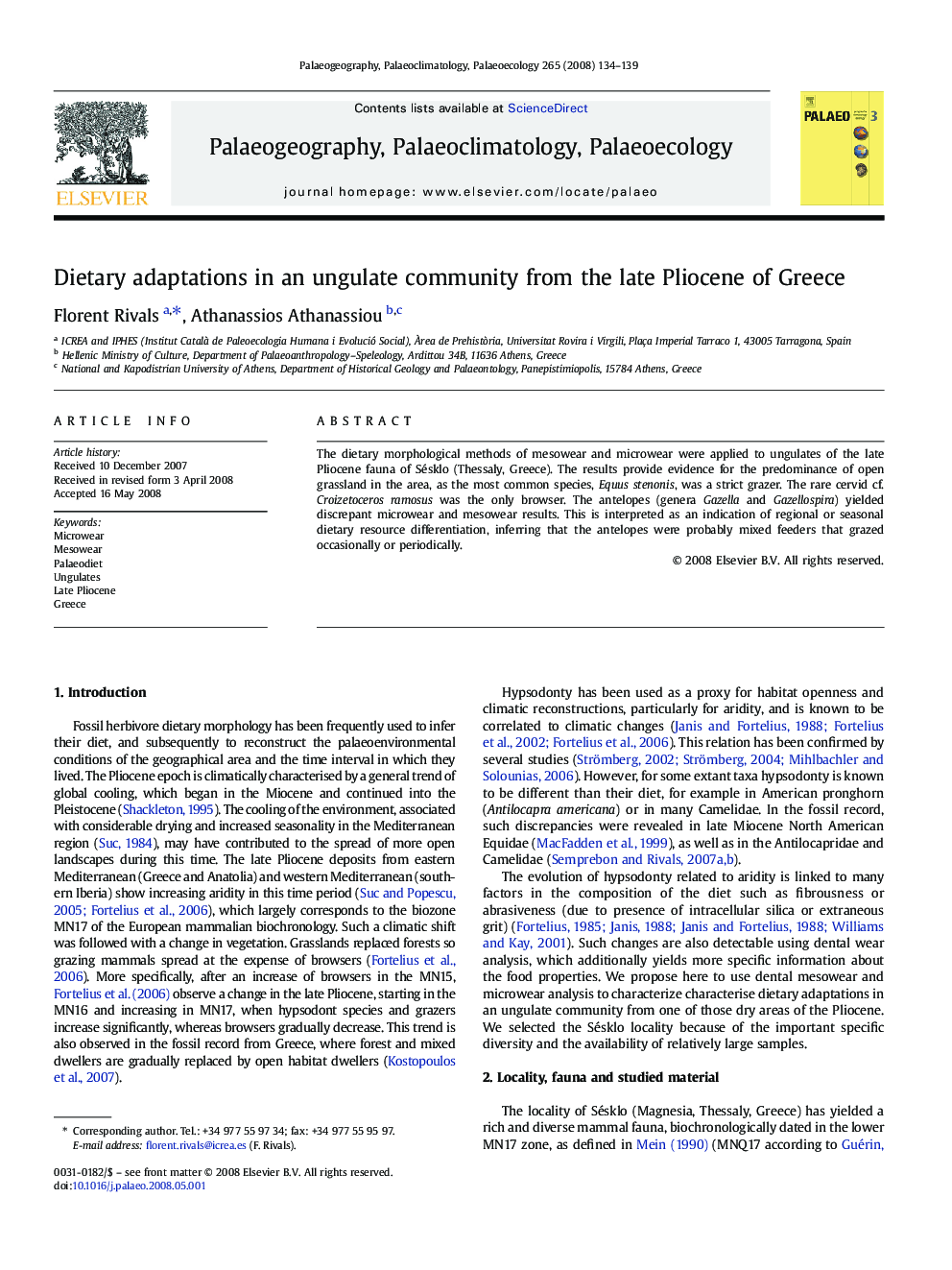| Article ID | Journal | Published Year | Pages | File Type |
|---|---|---|---|---|
| 4468548 | Palaeogeography, Palaeoclimatology, Palaeoecology | 2008 | 6 Pages |
Abstract
The dietary morphological methods of mesowear and microwear were applied to ungulates of the late Pliocene fauna of Sésklo (Thessaly, Greece). The results provide evidence for the predominance of open grassland in the area, as the most common species, Equus stenonis, was a strict grazer. The rare cervid cf. Croizetoceros ramosus was the only browser. The antelopes (genera Gazella and Gazellospira) yielded discrepant microwear and mesowear results. This is interpreted as an indication of regional or seasonal dietary resource differentiation, inferring that the antelopes were probably mixed feeders that grazed occasionally or periodically.
Related Topics
Physical Sciences and Engineering
Earth and Planetary Sciences
Earth-Surface Processes
Authors
Florent Rivals, Athanassios Athanassiou,
